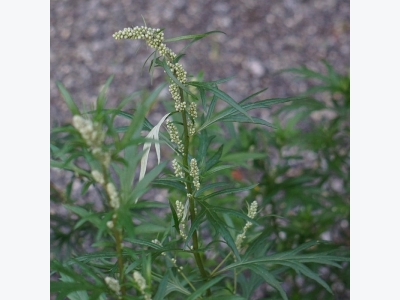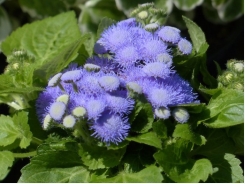How to Get Rid of Invasive Mugwort

Mugwort is a pesky plant with an equally displeasing name. It has become an excessively problematic plant in Tennessee and Georgia in recent years where it is currently considered an invasive plant.
Mugwort grows from rhizomes that are extremely hardy and readily productive. Mugwort releases seeds in late summer in warm regions like the Southeast, which creates double trouble for those wishing to stop its rampant growth.
Invasive plants are becoming more of a hot topic than ever before. Most invasive species arrived in the U.S. under innocent circumstances. Mugwort (Artemisia vulgaris) came to the U.S. from Europe or Asia as a perennial herb that debatably has a number of health benefits. In its native environment, mugwort was most likely prone to disease and environmental conditions that prevented it from overtaking other plants.
Like other invasive species though, mugwort has no natural predators in its new environment. Sometimes a plant that is removed from one ecosystem into a new one is capable of outcompeting the native plants for nutrients in the soil, or for sunlight, or for other necessities for a plant's success. This is the case for the mugwort plant.
How to Identify Mugwort
Mugwort is also known as false chrysanthemum. As the name implies, the foliage of the mugwort looks strikingly similar to that of the chrysanthemum. The leaves smell similar to those of the chrysanthemum, too. However, mugwort is simply a cleverly disguised weed that is sneaking into gardens everywhere.
Mugwort is worth adding to your list of most unwanted vegetation. And, it is an important plant to identify as it begins to invade other regions. You'll want to know this one when you see it. Here is a link with some excellent images to help you identify mugwort.
How to Control Mugwort
Some invasive plants, like English ivy for example, are planted for a reason. Gardeners like the appearance and behavior of English ivy, and it is readily available to purchase. Research concerning how to control and eradicate it has been conducted. Mugwort, on the other hand, is sort the new kid on the block that no one really knows anything about.
Mugwort is not a plant that a typical gardener would plant purposefully. The spread of mugwort occurs when a gardener purchases a plant that has been extracted from the ground where a mugwort rhizome may have inadvertently been collected, too. So, research on how to control and eradicate this pest is preliminary.
One thing known is that the rhizomes are very hardy and they will produce a new plant from a very small piece. Don't try to chop the rhizome up. Herbicidal treatment for weeds is recommended. However, your ornamental plant that you purchased with the sneaky mugwort on the side may not withstand the herbicidal weed treatments. The decision may be a difficult one if you already have a mugwort in your midst.
If you have not been exposed to a mugwort in your landscape yet, the job for you as a conscientious gardener is to be aware of this plant and to be able to recognize it. Once you can identify it, be careful not to introduce one into your own garden. If you do, it will likely spread from the garden into your yard and right out into your neighborhood and beyond.
Invasive Plant Awareness
Spread the news about mugwort and other invasive plants before these plants spread themselves into your region. Be aware of what plants are considered dangerous in your area. Share that information and knowledge with your neighbors and fellow gardeners.
Organize a community group dedicated to education concerning what plant varieties pose a threat to the native plants. Encourage your community to avoid garden centers or nurseries that sell plants known to cause harm to the local ecosystem. And finally, contact your local extension office to learn more about how you can help tackle the issue of invasive plants.
Related news
Tools

Phối trộn thức ăn chăn nuôi

Pha dung dịch thủy canh

Định mức cho tôm ăn

Phối trộn phân bón NPK

Xác định tỷ lệ tôm sống

Chuyển đổi đơn vị phân bón

Xác định công suất sục khí

Chuyển đổi đơn vị tôm

Tính diện tích nhà kính

Tính thể tích ao




 How to Grow Johnny Jump Up
How to Grow Johnny Jump Up  How to Grow Ageratum (Floss Flower)
How to Grow Ageratum (Floss Flower)